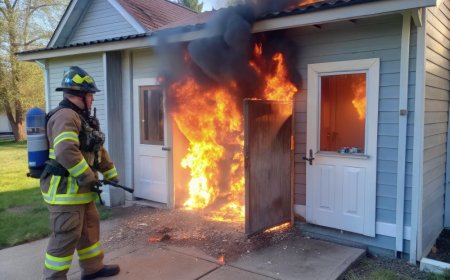Healing Exclusion With Safe Community Spaces
Explore how safe community spaces can heal social exclusion by fostering inclusion, trust, and connection through dialogue, support, and shared experiences.

In todays divided and often alienating world, the need for safe community spaces has become more critical than ever. Marginalized individuals and communities frequently find themselves excluded from mainstream institutions, social circles, and decision-making processes. This exclusion can lead to cycles of mistrust, violence, and disconnection. In contrast, when people come together in inclusive, non-judgmental environments, they experience a sense of belonging and empowerment. Safe community spaces provide exactly that, physical or emotional environments where every voice is respected, every background is welcomed, and healing can begin for those who have long been left on the margins.
Impact of Exclusion on Individuals and Communities
Social exclusion does not just isolate individuals; it fractures the social fabric as a whole. Whether its due to race, religion, gender identity, economic status, or disability, exclusion leads to long-term emotional and psychological wounds. Disconnected individuals are more likely to experience depression, anxiety, and hopelessness. At the community level, exclusion breeds mistrust, weakens social bonds, and can even lead to unrest. Safe community spaces serve as antidotes to these harmful effects. They offer places where people can listen, learn, and heal together. When people feel seen and valued, they are more likely to engage positively with others around them.
Community Approaches to Inclusion and Justice
Effective healing and reconciliation initiatives are essential in transforming exclusion into inclusion. These initiatives often focus on open dialogue, storytelling, and shared understanding among historically divided or marginalized groups. Programs led by social workers, local leaders, or community organizations help address past harms and promote empathy and understanding. When paired with safe community spaces, these initiatives become even more powerful. The space itself becomes a tool of healing, offering a haven where people can confront difficult truths without fear. These intentional efforts allow communities to reflect on injustice, rebuild relationships, and lay the foundation for a more just and cohesive society.
How Safe Community Spaces Foster Belonging
The defining characteristic of safe community spaces is that they prioritize inclusion over assimilation. These spaces are not just about being physically safe; they are about emotional and psychological safety, too. They provide environments where people feel free to express their identities, share personal experiences, and explore new ideas. From LGBTQ+ centers to youth clubs and cultural forums, these spaces recognize the value of every individual. By facilitating open dialogue, art, education, and shared experiences, such spaces empower individuals who might otherwise feel voiceless or invisible. They become places of genuine connection and community growth.
Cultural and Artistic Expression as Healing Tools
Art, music, and storytelling have long been central to cultural survival and emotional healing. Safe community spaces that incorporate artistic expression often see deeper and more sustained engagement from marginalized groups. Through murals, poetry readings, open mic nights, and traditional craft circles, communities can share their histories and hopes. Artistic expression validates personal experience and invites empathy. It breaks down barriers and allows people to see one another in more human, less politicized ways. These creative platforms also serve as historical archive,s preserving narratives that might otherwise be lost or ignored in mainstream discourseYouth-Leded Spaces and the Power of Young Voices
Young people are often among the most excluded, yet they carry immense potential for transformation. Safe community spaces designed with youth in mind help channel their energy into meaningful action. These spaces allow young individuals to express their concerns, propose solutions, and build leadership skills. Youth centers that provide mentorship, mental health support, and educational resources can serve as catalysts for social mobility and community involvement. When young people feel included and empowered, they are more likely to contribute positively to society. Their engagement not only heals their wounds of exclusion but also helps shape more inclusive futures.
Faith-Based and Interfaith Community Spaces
Faith communities can play a vital role in bridging divides and fostering inclusion. Many safe community spaces are rooted in religious institutions that open their doors to people of all beliefs, backgrounds, and orientations. These interfaith spaces emphasize shared moral values like compassion, justice, and service. They often host food drives, shelter services, and interfaith dialogues that bring people together across boundaries. By promoting respect and spiritual solidarity, these spaces help dismantle prejudice and fear. Their influence can be especially impactful in areas where religion has been used as a dividing tool, transforming it instead into a force for peace and understanding.
Importance of Physical Design and Accessibility
Creating a safe community space also involves careful consideration of its physical environment. Accessibility is key ramps for wheelchairs, gender neutral restrooms, multilingual signage, and quiet zones for neurodiverse individuals all signal inclusion. The design should reflect the community it serves. Comfortable seating, inclusive artwork, and flexible layouts create a welcoming atmosphere. More importantly, community members should have a say in how the space is organized and run. When people are involved in shaping the environment, it increases their sense of ownership and commitment. An inclusive design encourages participation and makes healing more tangible and communal.
Partnerships with Local Institutions
While grassroots efforts are essential, partnerships with schools, hospitals, and local governments can amplify the impact of safe community spaces. These institutions bring resources, expertise, and long-term stability to community-led efforts. For example, a school might partner with a neighborhood center to provide after-school programs, or a health clinic might offer mental health services within a community hub. When local systems actively support inclusive spaces, it validates their importance and helps ensure sustainability. It also sends a powerful message: that healing and inclusion are not fringe ideals, but central to community well-being and progress.
Challenges and the Need for Sustainable Support
Despite their importance, safe community spaces often face funding challenges, political pushback, or a lack of visibility. Some are forced to operate under constant threat of closure or discrimination. Both public and private sectors must recognize their value and invest in their growth. Volunteers, donations, policy reform, and community advocacy all play roles in supporting these spaces. Healing exclusion is a long-term process, and consistency is vital. To make a lasting impact, communities must commit to sustaining these spaces not just in times of crisis but as ongoing foundations for social well-being and unity.
Conclusion
Healing exclusion is not a one-time event; its an ongoing commitment that requires intention, compassion, and space. Safe community spaces serve as the heart of this effort, providing environments where people can feel seen, valued, and heard., These spaces become powerful catalysts for unity, trust, and growth. They help individuals overcome trauma, build relationships, and re-engage with society in constructive ways. In doing so, they nurture stronger, more compassionate communities. By investing



































